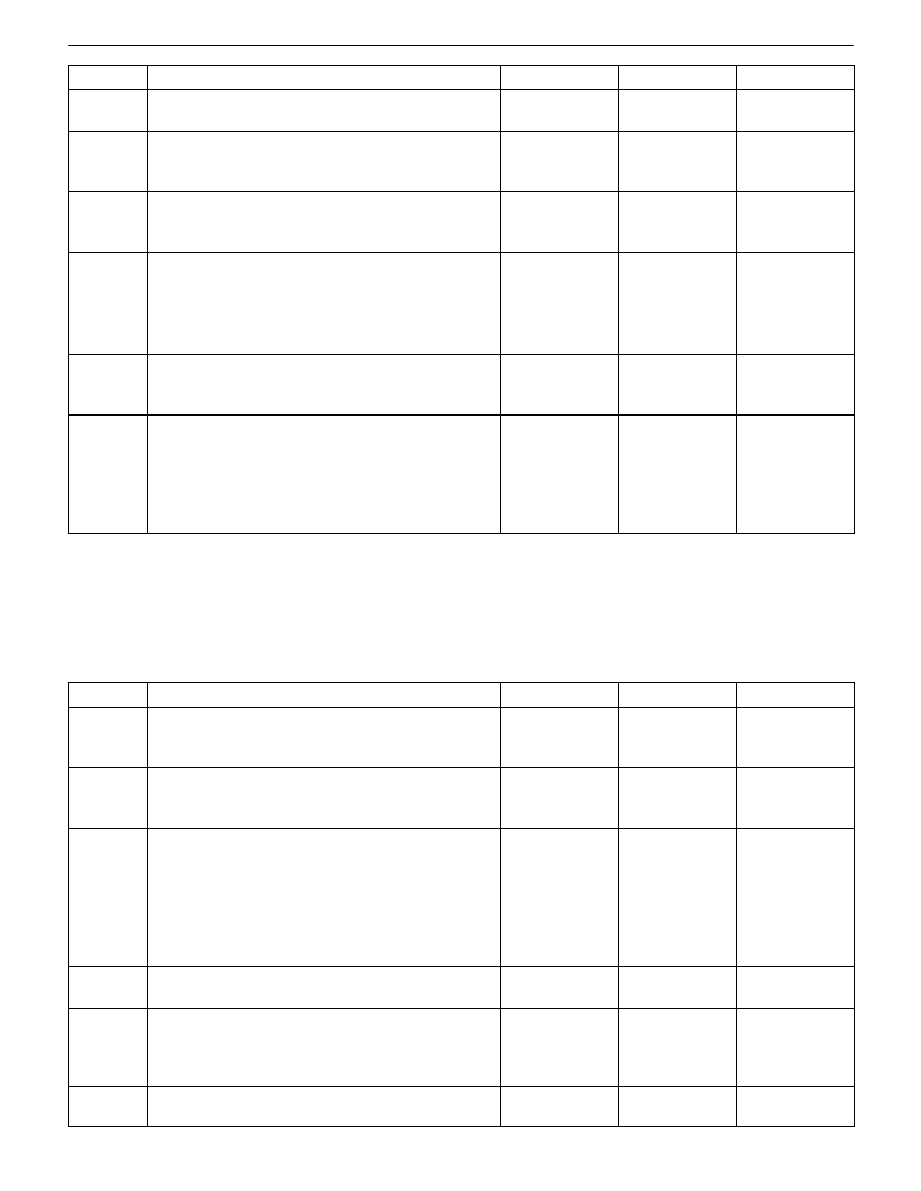Daewoo Nubira. Manual - part 121

1F – 368
I
ENGINE CONTROLS
DAEWOO V–121 BL4
Step
No
Yes
Value(s)
Action
11
Replace any restricted or leaking fuel injectors.
Is the repair complete?
System OK
12
Check the fuel system pressure after a cold start or
during moderate or full throttle acceleration.
Is the fuel pressure within specifications?
41–47 psi
(284–325 kPa)
Go toStep 14
Go toStep 13
13
Repair the restriction in the fuel system or replace
the faulty fuel pump.
Is the repair complete?
System OK
14
1. Check for faulty ignition wires.
2. Inspect for fouled spark plugs.
3. Check the ignition system output on each cylin-
der with a spark tester.
Is the problem found?
Go toStep 15
Go toStep 16
15
Repair or replace any ignition components as need-
ed.
Is the repair complete?
System OK
16
1. Check the generator output voltage.
2. Repair or replace the generator if the generator
output is less than the value specified.
3. Check the Exhaust Gas Recirculation (EGR)
valve operation.
Are all checks and needed repairs complete?
12–16 v
System OK
CUTS OUT, MISSES
This Involves a steady pulsation or jerking that
follows engine speed, usually more pronounced as
engine load increases. The exhaust has a steady
spitting sound at idle or low speed.
Step
Action
Value(s)
Yes
No
1
Were the Important Preliminary Checks performed?
Go toStep 2
Go to”Impor-
tant Preliminary
Checks”
2
Check the ignition system output voltage for all of the
cylinders using a spark tester.
Is spark present on all of the cylinders?
Go toStep 3
Go to”Ignition
System Check”
3
1. Inspect the spark plugs for excessive wear,
insulation cracks, improper gap, or heavy de-
posits.
2. Check the resistance of the ignition wires. Re-
place any ignition wires that have a resistance
greater than the value specified.
Is the problem found?
30,000
Ω
Go toStep 4
Go toStep 5
4
Repair or replace any components as needed.
Is the repair complete?
System OK
5
With the engine running, spray the ignition wires with
a fine water mist to check for arcing and shorting to
ground.
Is the problem found?
Go toStep 6
Go toStep 7
6
Replace the ignition wires.
Is the repair complete?
System OK